Nowadays, the sixth DOTA2 International Invitational Tournament (TI6) is in full swing. Although the competition is very exciting and interesting, as far as VR practitioners are concerned, the turret is even more compelling and should be another recent launch. Gadgets - "The Turret VR HUB" (DOTA VR HUB). This 1M-sized plug-in requires full DOTA2 body installation and seems to be currently only available on Steam for "DOTA VR" DLC. This means that the national service player may want to perform a VR experience, which may take a little effort.

So, what exactly is this DOTA VR HUB? Some people think that it is just a gimmick to unlock perspectives, and some people think that it is an independent experience game. In fact, it is a social video watching tool. As soon as you start the DOTA game after opening Steam VR, it will automatically enter this VR HUB. This mode mainly provides two functions, one is a preview of the character, you can enter a dressing room type scene, watch the equipment of various heroes, the other is the main course, open the room to watch the DOTA video.
You can choose to create a public or private room in the game, and then you will be sent to a closed scene. Right in front of it is a large screen. Using the Vive handle, you will see the "View DOTA" prompt. After clicking, you will see the download video, online viewing and other options. In general, downloading a video is the most stable, and it is also possible to control the time at will. On-line viewing is limited in control time.

But no matter what you look at, after opening a game, you will find that the original empty scene becomes lively. The heroes' models appear in the left and right rows, and their equipment is shown below. On the big screen in front of you is the DOTA2 normal perspective game, and below is a small 3D map with different status curves on each side to better analyze the situation. On the upper right side of the big screen, you can also switch the fog of war or commentary switch. Basically, it is more than enough to watch the game.
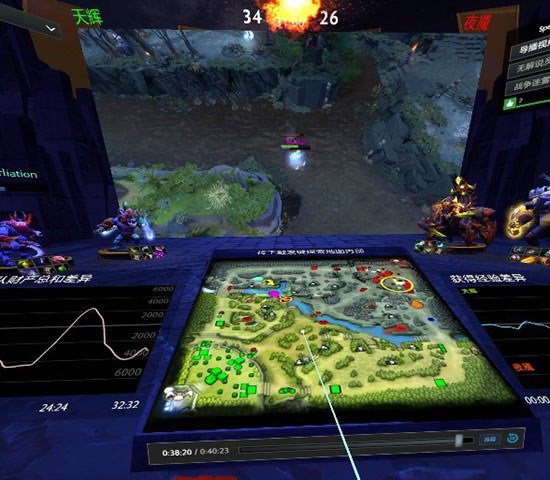
But the most shocking thing is that when you use the Vive handle to click on the small map directly below, you will be transferred to the game's 3D world. You are like a God floating in this world, observing the fierce fighting of heroes on both sides. From this perspective, you can not only move around, but also zoom in and out. From the traditional top-down perspective, to the perspective of the size of the hero, etc., no matter which one gives a new feeling to watch the DOTA video.
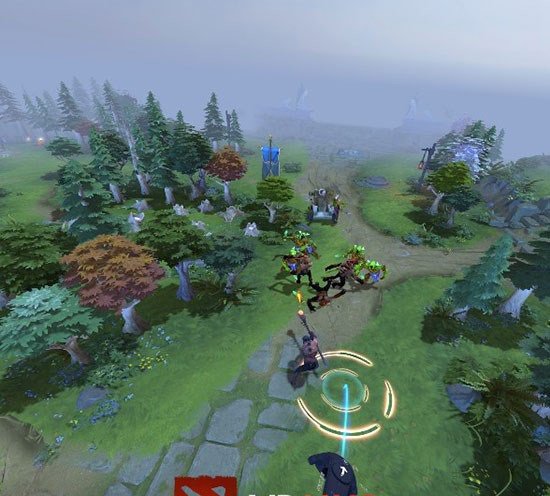
Imagine that in the middle of the river, the heroes of both sides are madly making up for and harassing each other, and you are sitting by the woods on the side of the river and eating watermelons and watching them fight. At this time, you caught a glimpse of light from the corner of your eye, turned around and found that you had jumped into a white tiger and shot an arrow through the eye. This arrow quickly flew in front of your eyes, letting you subconsciously dodge backwards, and then turning around you found that someone in the middle of the road had already lost his life. All this is happening in VR, but it is like being in a dream, like never before.
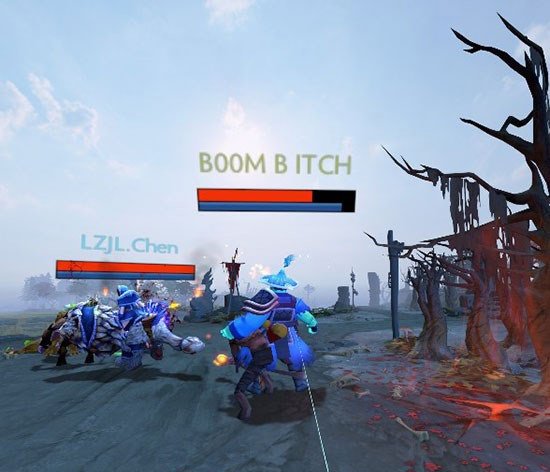
Of course, this DOTA VR HUB is not without its shortcomings, after all, it is only a small version of the original program, so some features are not yet perfect. For example, when you enter the game perspective, you cannot control the switch of time and war fog, and you can't quickly jump to a hero. This means that you need to continue to transfer quickly in the game, to keep up with the rapid battle in the game at your own pace, which makes people feel a bit frantic, and often miss the wonderful.
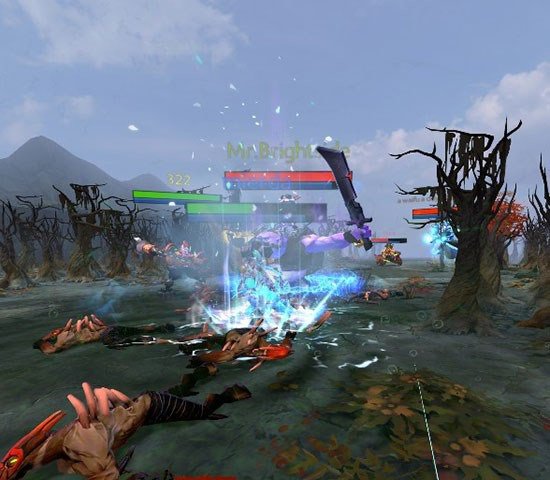
In addition, when you zoom in on the angle of view, each hero's modeling and terrain accuracy is less than satisfactory. After all, DOTA2 itself is a top-down game, modeling does not need to be too detailed, some lighting effects are also laid out according to the top-down corner. So when you enter the isometric perspective, no matter how rough the modeling is, there are some special effects that look pretty rough. And because to satisfy VR rendering twice, the resolution of the game is also reduced a lot. Even so, the fierce battlefield you can feel in VR is something that no HD monitor can afford.
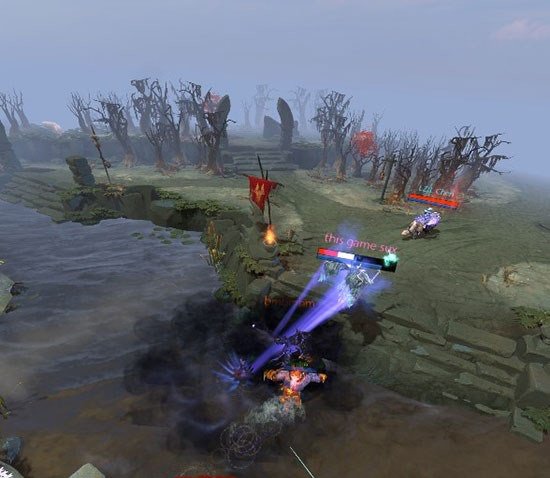
In fact, in the end, the "Draft Turret VR HUB" (DOTA VR HUB) improved the viewing of the DOTA competition entertainment properties, magnified the sense of presence through VR, for fans is definitely a desperate function. And because of the increased immersive feeling, I believe there will be new ways to explain the game in the future. That is to analyze the battle situation from the perspective of the battlefield, or through different perspectives to increase the appreciation of the video. It remains to be seen what kind of ecology will eventually become.
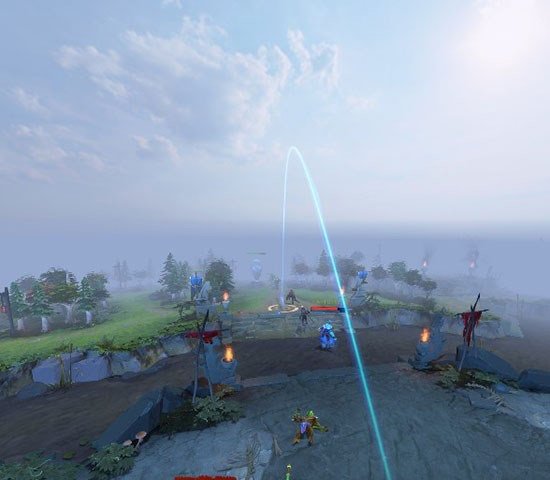
However, this is indeed a gimmick for those who are not so powdered, and there is nothing new for DOTA 2 and there is no technical breakthrough. So, if you don't buy a small open box every year and follow a live webcast to watch a TI game, then this feature may not make any sense to you. On the contrary, if you are a DOTA fan, then you must try to try this VR HUB.
Overview of THE LVDS interface
LVDS, Low Voltage Differential Signaling, is a Low Differential signal technical interface. A digital video signal transmission method is developed to overcome the disadvantages of high power consumption and EMI electromagnetic interference when transmitting wideband high bit rate data in TTL level mode. The LVDS output interface USES a very low voltage swing (about 350mV) to transmit data through differential on two PCB routing lines or a pair of balanced cables, i.e. low-voltage differential signal transmission. LVDS output interface enables signals to be transmitted at a rate of several hundred Mbit/s on differential PCB lines or balanced cables. Low voltage and low current driving modes enable low noise and low power consumption.
Composition of THE LVDS interface circuit
In LCD, THE LVDS interface circuit consists of two parts: the LVDS output interface circuit on the motherboard side (LVDS transmitter) and the LVDS input interface circuit on the LCD panel side (LVDS receiver). The LVDS transmitter converts TTL signals into LVDS signals, and then sends the signals to THE LVDS decoder IC of LVDS receiver on the LCD panel side through a flexible cable (cable) between the driver panel and the LCD panel. The LVDS receiver then converts the serial signals into parallel SIGNALS of TTL level and sends them to the LCD panel timing control and the line and line drive circuit.
Vga Input Controller,Video Input Controller For Pvi Lcd,Vga Board For Pd064Vt8 Pd064Vt4,Vga Input Controller For Pvi Lcd
Tonya Display Limited , https://www.tydisplay.com
